
utricle Google Search EarWaxBuildup Inner ear diagram, Inner ear
The human ear is the organ of hearing and equilibrium. It detects and analyzes sound by the mechanism of transduction, which is the process of converting sound waves into electrochemical impulses. Audition cannot take place adequately if the anatomy is abnormal. This article will discuss the mechanisms implied in the conduction of sound waves into the ear, and its integration and transmission.

EarQ Anatomy of the Ear Chart Human ear, Inner ear diagram, Ear anatomy
Internal ear This mixture of bones, nerves, vessels, membranes, and muscles that make up the ear will be described in this article. Contents External ear Auricle External acoustic meatus Tympanic membrane Muscles of the external ear Vasculature of the external ear Innervation of the external ear Middle ear Tympanic cavity Auditory ossicles

15.3 Hearing Anatomy & Physiology
Anatomy Organs The Anatomy of the Ear Organs of human hearing are located on either side of the head By Mark Gurarie Updated on June 07, 2022 Medically reviewed by John Carew, MD Table of Contents Anatomy Function Associated Conditions Tests Essential for hearing and balance, each ear has an intricate structure of bones, nerves, and muscles.

Inner Ear Discovery Helps Explain How Sound Waves Brain Signals
Inner and Middle Ear. The cochlea is the most critical component of the inner ear. It is divided into three fluid-filled chambers, called scalae, that spiral around a bony core. The scala media.
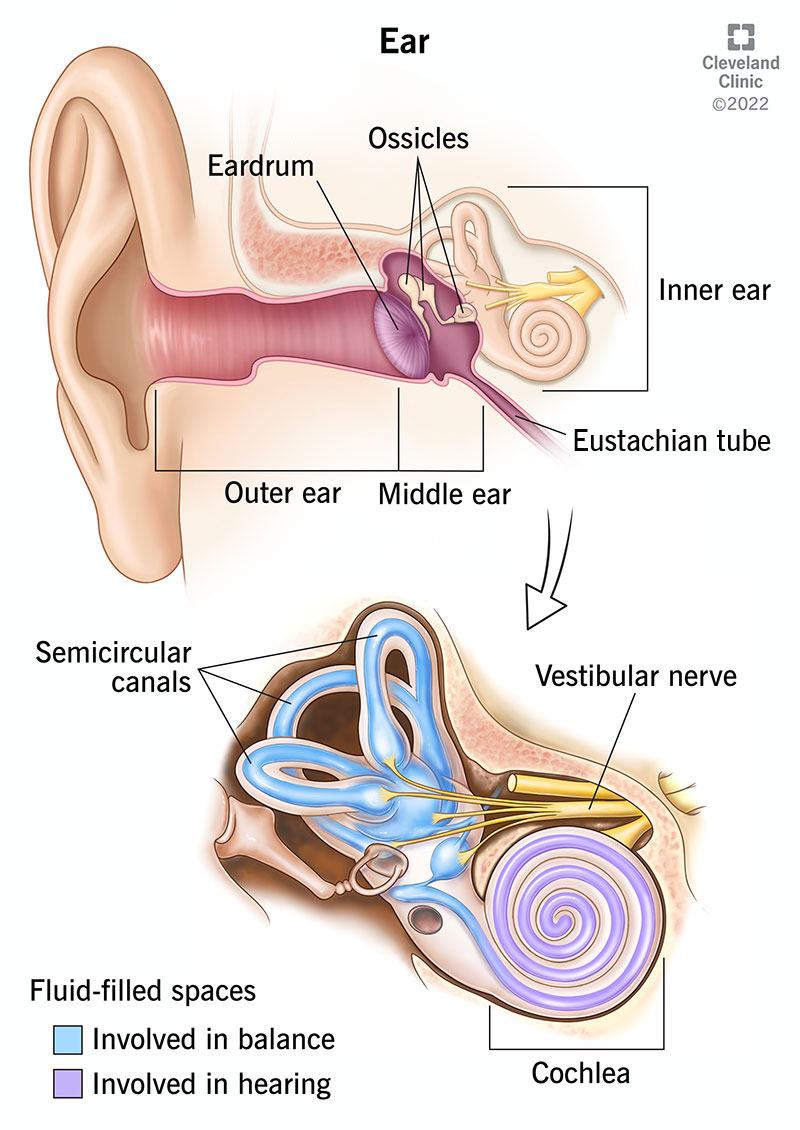
Ear Anatomy, Facts & Function
Next to the middle ear in the bone of the skull is a small compartment which contains the hearing and balance apparatus known as the inner ear. The inner ear has two main parts. The cochlea , which is the hearing portion, and the semicircular canals is the balance portion.

Ear infections explained Dr Mark McGrath
The inner ear, or labyrinth, is the deepest part of the ear. It is located at the end of the ear canals, resting in a cavity in the temporal bone. The inner ear consists of three parts:.

Afbeeldingsresultaat voor middle ear anatomy Ear anatomy, Middle ear
Gross Anatomy. In mammals, the anatomy of the inner ear consists of the bony labyrinth, a system of passages making up the following 2 main functional parts: (1) the cochlea, which is dedicated to hearing, and (2) the vestibular system, which is dedicated to balance. [ 1, 2] The inner ear is found in all vertebrates, with substantial variations.
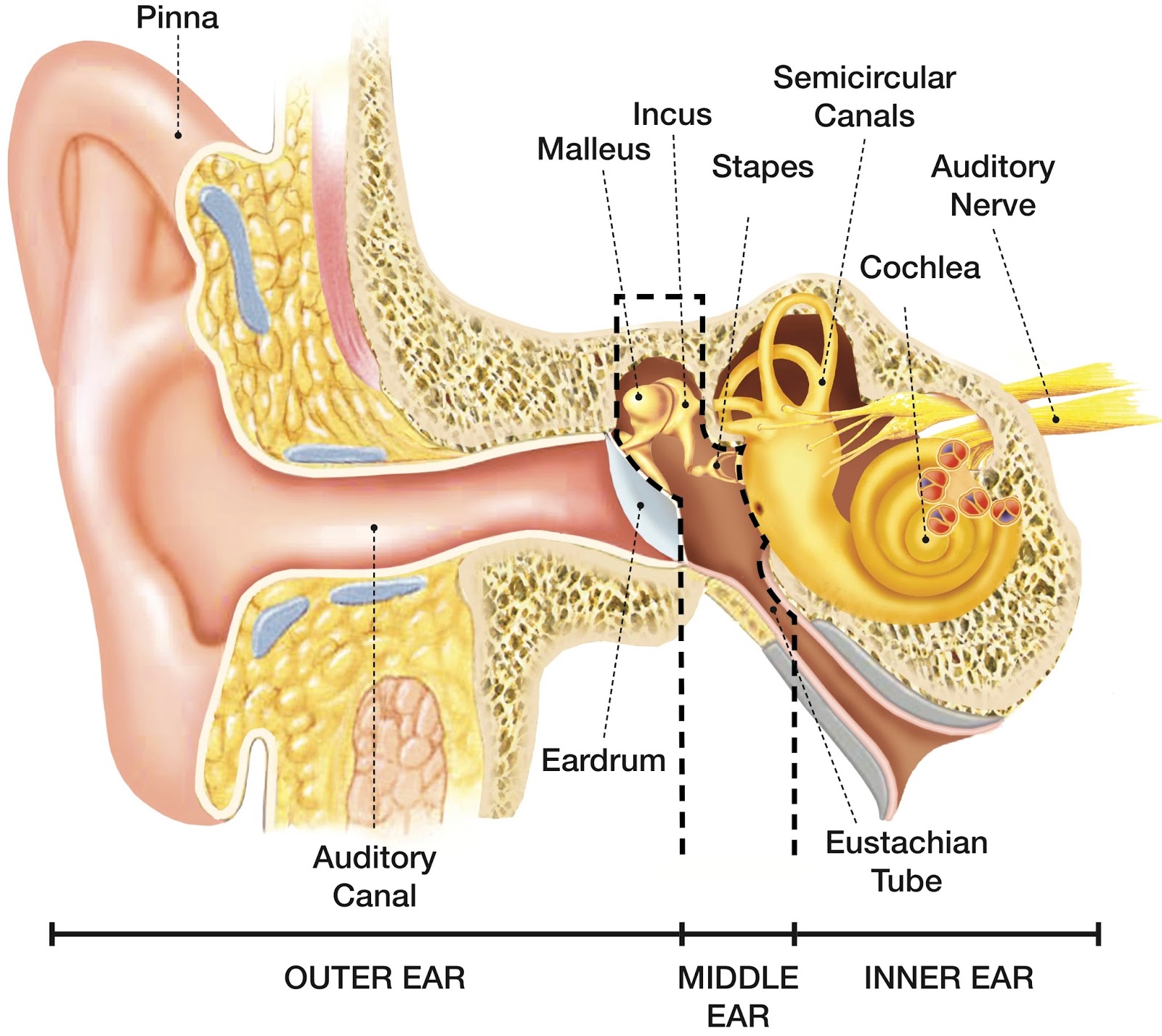
SPEECH LANGUAGE PATHOLOGY & AUDIOLOGY HEARING DISORDERS OF THE OUTER EAR
The inner ear is found in the petrous part of the temporal bone between the middle ear laterally, and the internal acoustic meatus medially. It is a small and important area which houses the irregularly shaped vestibulocochlear organ, which kind of looks like a snail shell attached to a few bony rings. Now, the inner ear contains the bony.
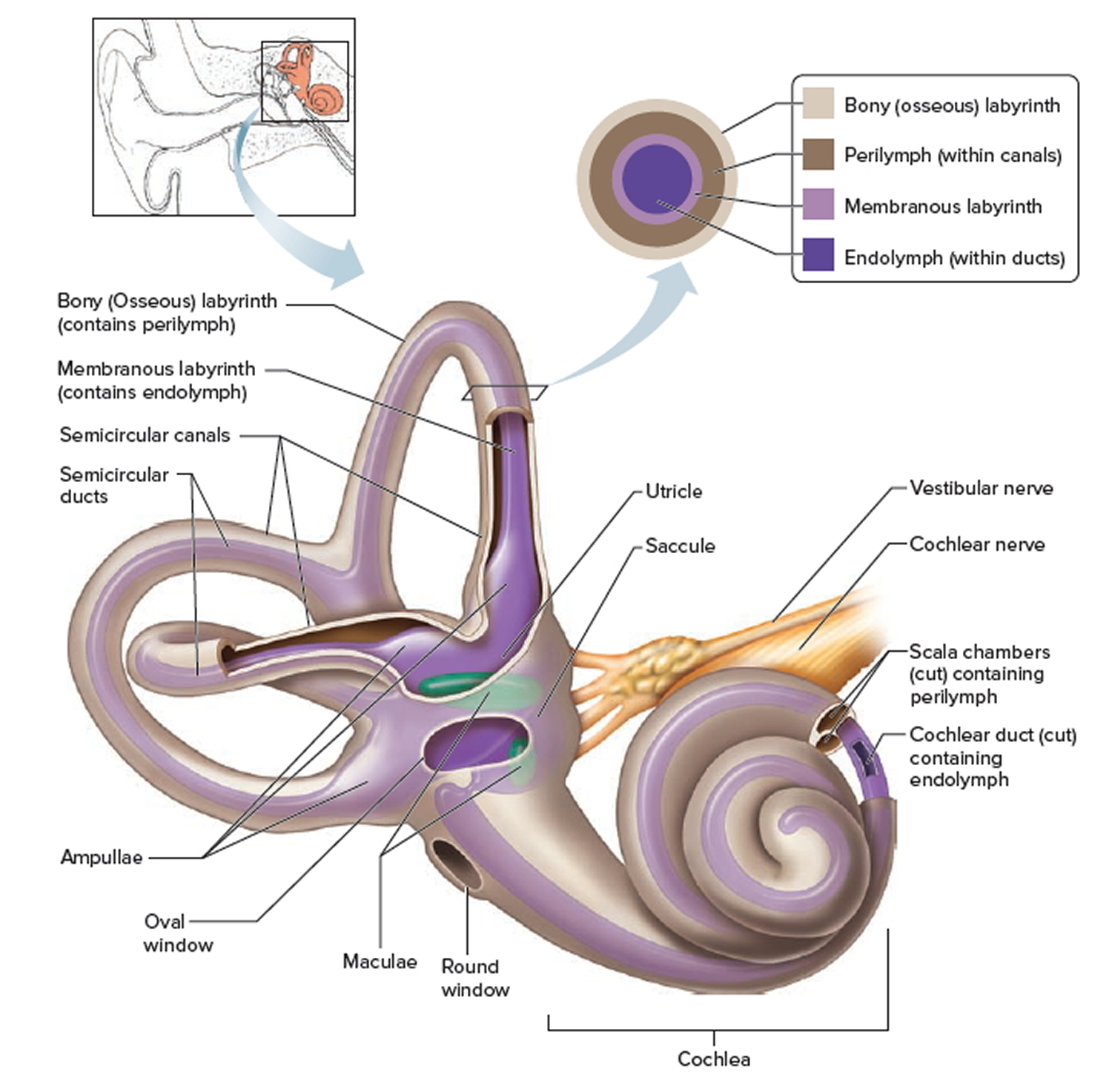
Human Ear Anatomy Parts of Ear Structure, Diagram and Ear Problems
Anatomy What are the parts of the inner ear? Your inner ear has three main parts: your cochlea, semi-circular canals (labyrinth) and your vestibule. Your cochlea supports your hearing and your vestibule and semi-circular canals support your balance. What is the cochlea?

Ear Anatomy Vestibular Disorders Association
Figure 31.4. Human inner ear anatomy. The inner ear has two structures: the semicircular canals and the spiral-shaped cochlea. The structures of the inner ear are filled with fluid. They are separated from the air-filled middle ear by two membranes called the oval window and the round window. Cross Section of the Cochlea
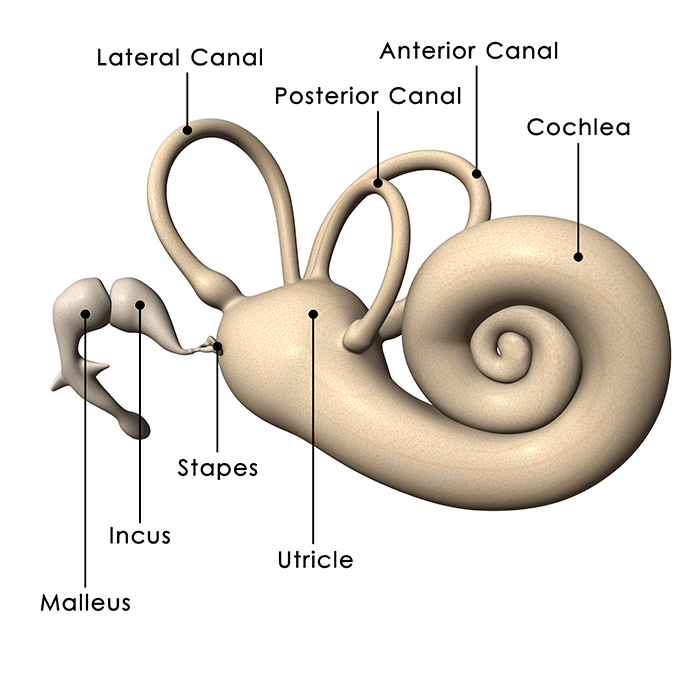
We Finally Know Why There's a Bizarre Structure in Our Inner Ears
Takeaway Your inner ear, also called the labyrinth, plays a key role in your hearing and sense of balance. Several conditions can impact the inner ear. Your inner ear is the deepest part of.

Inner Ear Problems Causes & Treatment of inner ear Dizziness & Vertigo
Fig 1 - Overview of the ear Anatomical Position and Structure The inner ear is located within the petrous part of the temporal bone. It lies between the middle ear and the internal acoustic meatus, which lie laterally and medially respectively. The inner ear has two main components - the bony labyrinth and membranous labyrinth.
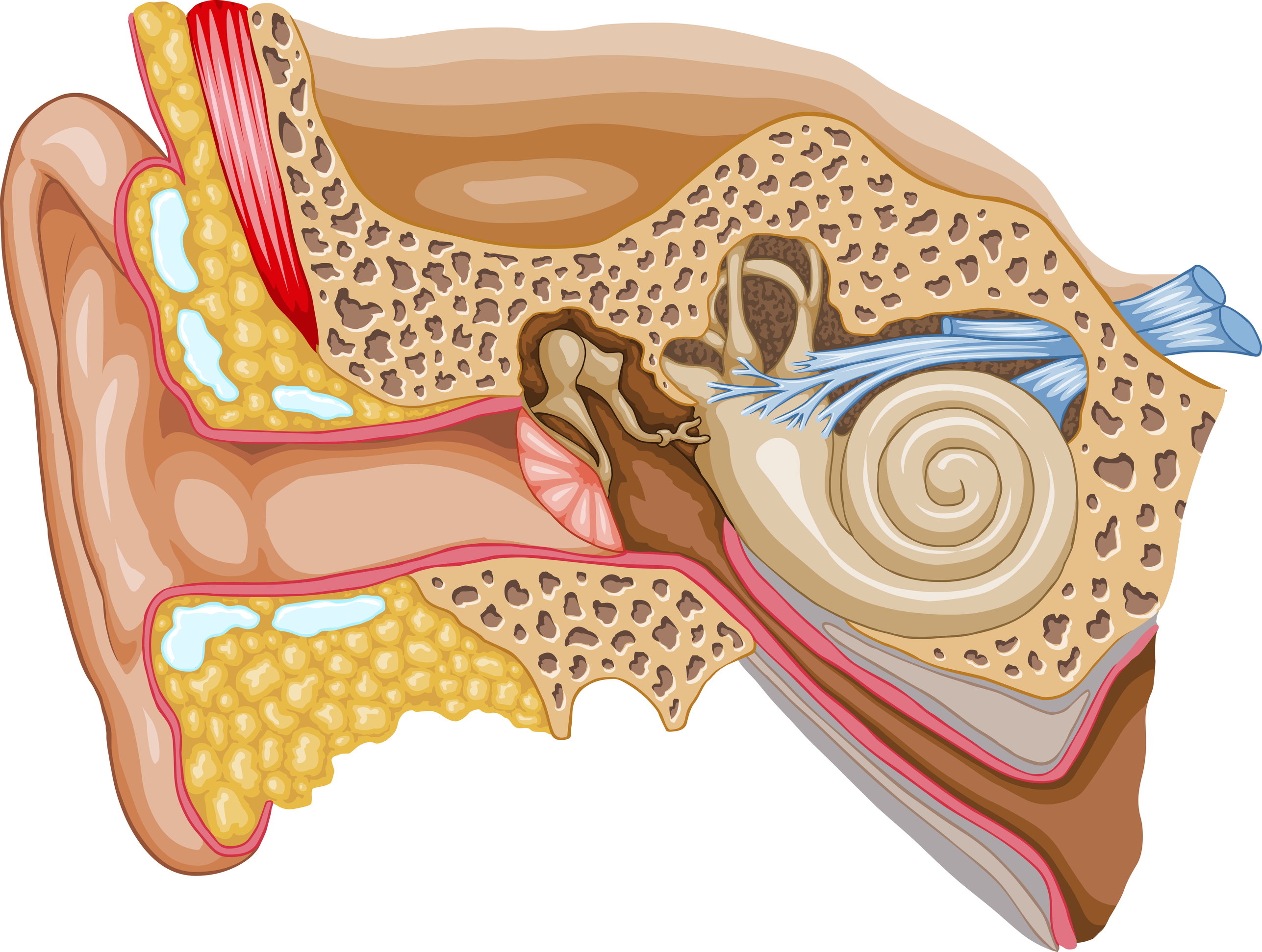
Medical problems of the eyes, ears, nose, and throat symptoms
inner ear, part of the ear that contains organs of the senses of hearing and equilibrium. The bony labyrinth, a cavity in the temporal bone, is divided into three sections: the vestibule, the semicircular canals, and the cochlea.
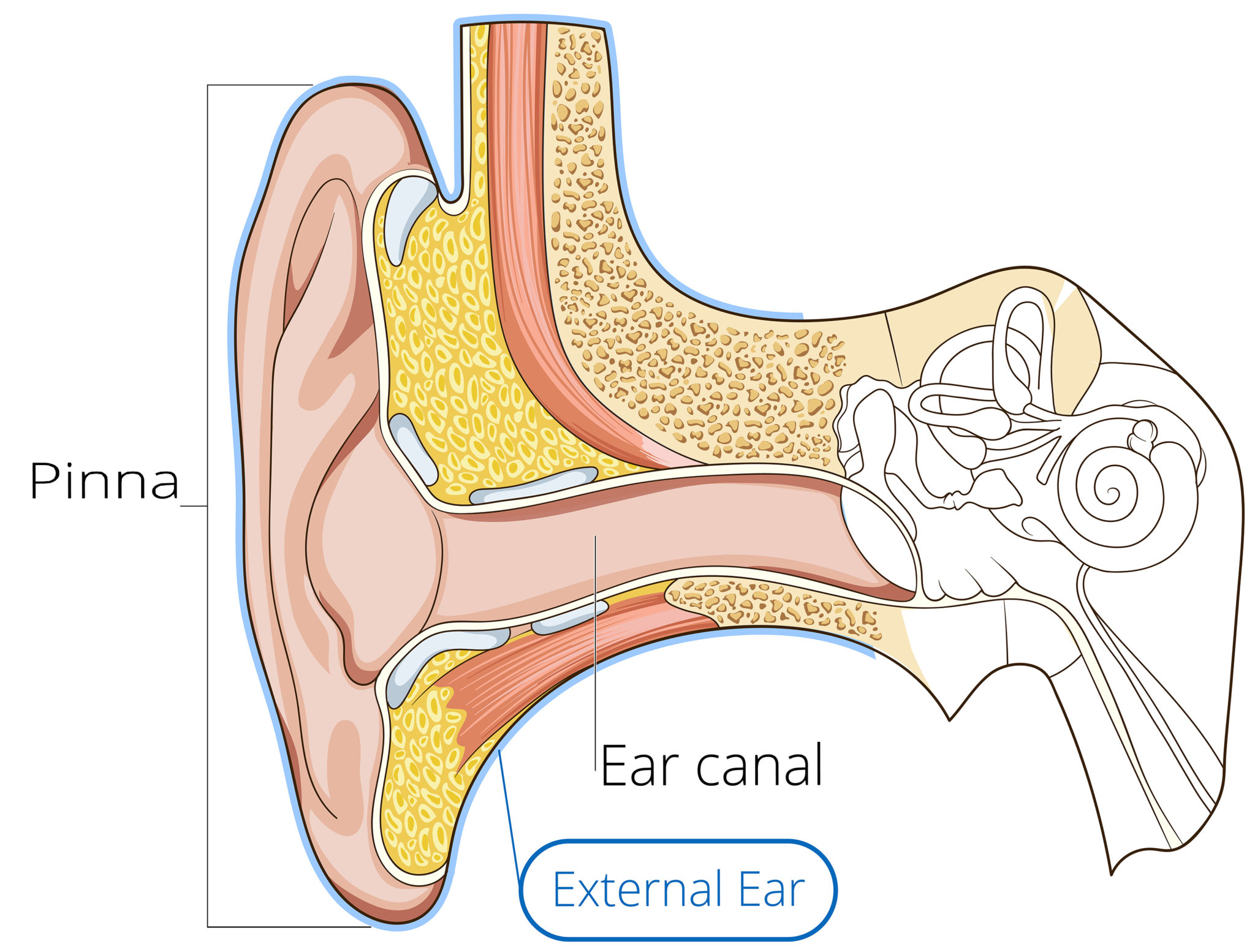
Ear Anatomy Causes of Hearing Loss Hearing Aids Audiology
What Is the Anatomy of an Ear? The ear is an unusually complex organ in human anatomy. Don't worry, though—each part has a purpose that is easy to understand. In this section, we describe the anatomy of the ear in simple terms. External Ear Anatomy (Auricle or Pinna)

What is conductive hearing loss? Blog of Kiversal
The inner ear is located within the bony labyrinth of the temporal bone and contains the cochlea, semicircular canals, utricle, and saccule. These organs make up the membranous labyrinth that is within the bony labyrinth, separated only by perilymph.

Vertigo Have You Spinning Chiropractic Home Care Ear anatomy, Human
Structure The ear is made up of the outer ear, middle ear, and inner ear. The inner ear consists of the bony labyrinth and membranous labyrinth. The bony labyrinth comprises three components: Cochlea: The cochlea is made of a hollow bone shaped like a snail and divided into two chambers by a membrane.